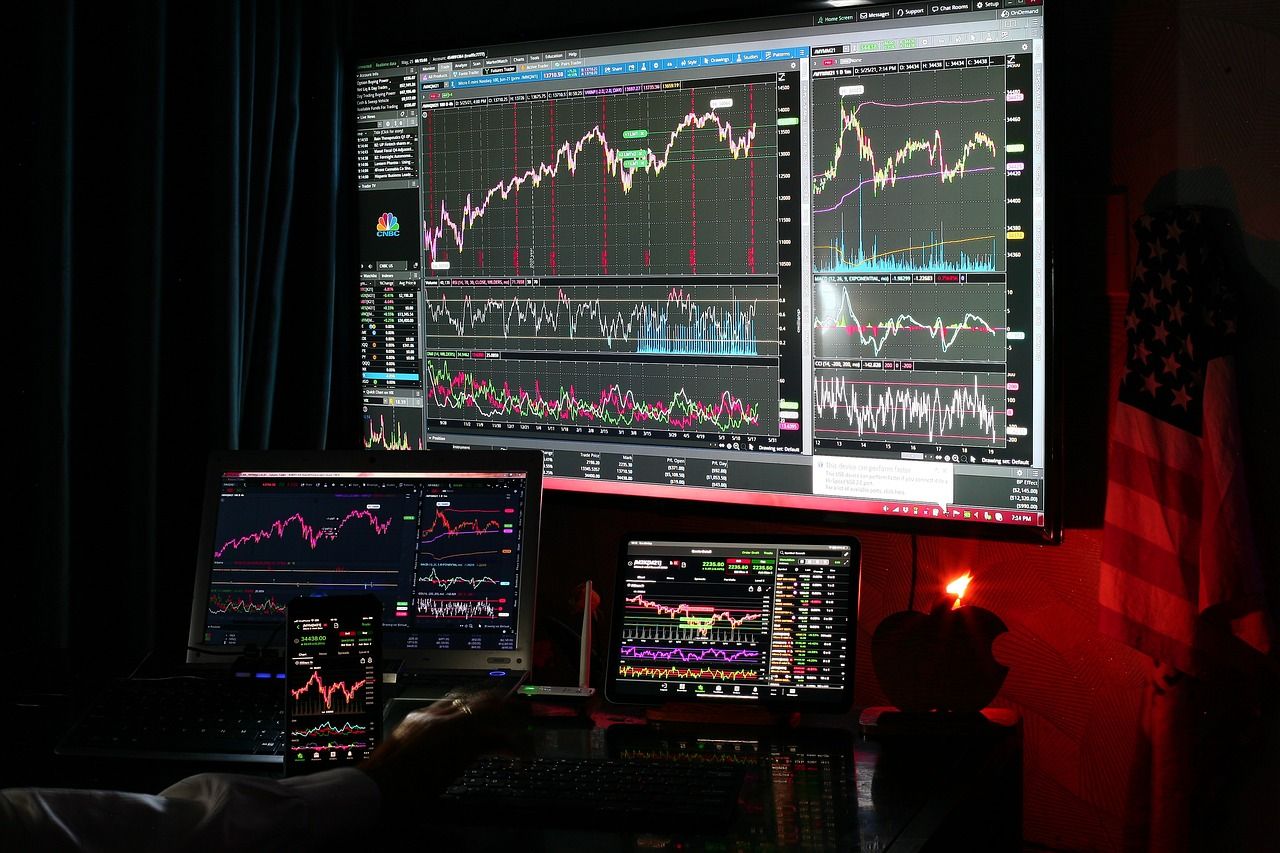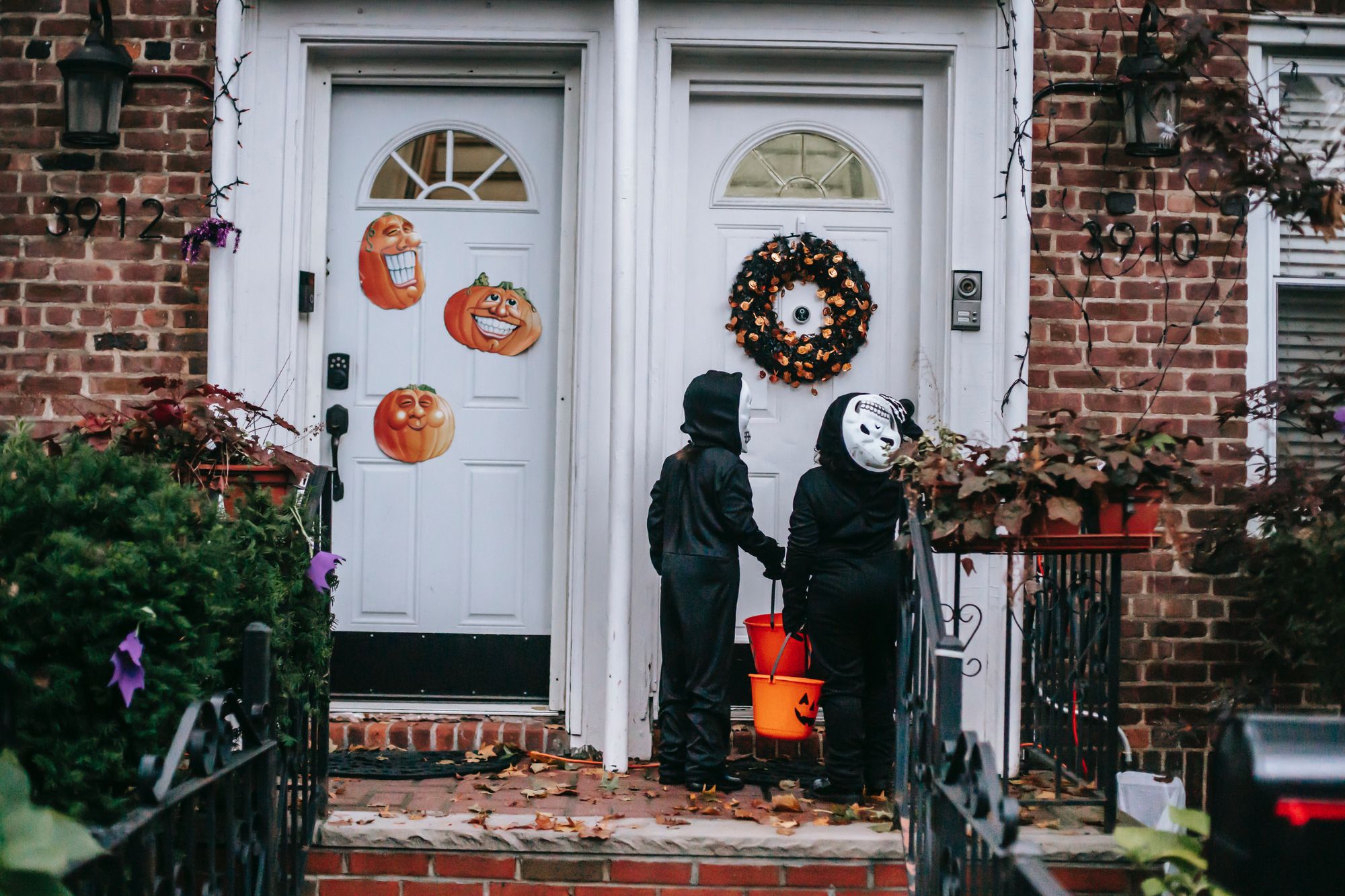American Horror Story: Where Your Chocolate Comes From
The truth is dark and bitter.
Scene 1: A protected forest somewhere in Ivory Coast
“Here, take this, boy. Let’s go, it’s getting late.”
The spray canister of glyphosate stands half as tall as the child. The heat only makes it heavier. The instructions warn that protective equipment must be worn when deploying this herbicide, but they’re in French, and the boy can’t read—he’s never gone to school. Too scared to ask questions, he swings the strap over his shoulder and follows the rest of the men and boys into the jungle. He knows there's trees to burn down and vegetation to spray. He has to make way for cacao trees.
Here in West Africa, in what’s left of the ancient forests of Ivory Coast (Côte d’Ivoire) and Ghana, this is how the story of your Hershey’s milk chocolate bars, your M&M’s, your Reese’s Peanut Butter Cups, begins. Children sold into unpaid labor toil on illegal cacao plantations cut into state-protected forest, unable to see their families for years on end. They survive on bananas and cassava. They handle chainsaws and machetes. They carry sacks of cacao beans that weigh 100 pounds—the scars on their bodies don't lie.
They're forced to help the plantation owners set fire to the forests to clear the land for cacao. This releases greenhouse gases, adding to the runaway climatic patterns that drive the extreme floods, droughts, and wildfires we're now seeing daily, and making the planet less livable for all of us. Due in large part to ongoing deforestation to grow cacao, Ivory Coast has lost a breathtaking 90 percent of its forest cover, and Ghana has lost 65 percent.
As the children and young people toil, day in and day out, unmarked trucks appear to pick up bags of cacao beans and disappear into the forest again, to sell them to middlemen, who sell them to agents of the large corporate buyers, smiling as they nod to their questions about certification and child slavery. Yes, yes, we're certified. No child slaves. No child slaves.
These kids don’t know what Halloween is.
They’ve never had a taste of the confection their hard labor helps to produce. All they know is poor nutrition, hard labor, and lack of clean water and proper sanitation.
Ivory Coast produces over 40% of the world’s cacao beans. West Africa in general produces approximately 70% of the world’s supply. According to a report by the Food Empowerment Project—worth reading in all of its lengthy and sobering entirety—at a 2020 strategy meeting of the World Cocoa Foundation (WCF), representatives from Nestlé, Hershey’s, Mars, and other large chocolate manufacturers were granted early access to a report by NORC at the University of Chicago that stated that child labor had increased to 2.1 million children. They didn’t find that number particularly palatable, apparently, and instead pushed for messaging focusing on their successes in addressing child labor and slavery. The final report released to the public had watered down the 2.1 million figure to 1.56 million.
Note that the NORC research, in their own words, “focuses on child labor and not forced child labor/child slavery.” In other words, the 2.1 million figure refers to children working in cacao plantations as a "job," rather than "forced" labor. Well, that’s a relief. Thank heaven for semantics; they always make the executives feel better. What choice does a child really have?
"Chocolate's Heart of Darkness"

Scene 2: Commodity futures trading desk, New York City
4,751 miles away, a young Wall Street trader checks his screen. Next to his keyboard are a cold cup of coffee and an opened pouch of trail mix with M&M’s, its guts spilled all over his desk. He frowns, leaning closer. He swears.
“What’s up, dude?” says the trader next to him, not even looking up from his own screen.
“Damn cocoa. Shit’s too volatile. I keep having to up my margin.”
“Thought it’s been sky high this year.”
The trader leans back in his chair, running his hand through his hair. He pops a few M&M’s into his mouth, oblivious to the irony.
“It’s up overall but keeps going up and down lately. May was the worst. People worried about being fat so they buy less. Then some influencer like Mr. Beast puts out his own bar and everyone goes crazy. Or some African government finally decides to do the right thing and investors flock in. Or it’s climate change. You know, droughts and shit.”
“So why’d you get into it? Gold’s pretty stable.”
“I got enough gold. It’s Allie. Always goin’ on about chocolate. She buys the fancy expensive stuff ‘coz she’s worried about the kids in Africa or something.”
The other trader laughs. “How is she letting you sleep in her bed. You’re trading all the slave cocoa.”
“I told her all that Fair Trade shit is fake. Doesn’t mean anything. Anyone can put up a sign. Corruption up and down in those countries.”
“Sounds like DC.”
The trader chuckles. “Yeah. Well, when this contract closes I think I’ll just buy her a box of chocolates and be done with it. Alright, ready for lunch? How about that sushi place across the street.”
“Yep, sounds good.”
The trader grabs his jacket off the back of his chair, and as he leaves, he flips an M&M at the trading screen. It ricochets, making a tiny red mark right next to the cocoa price blinking on the screen: 3,759 USD/MT.*

Once upon a time, money used to grow on trees, not screens. Before we had the gold standard, the Maya and the Aztecs had the cacao standard. Thirty cacao beans got you a small rabbit. For just one bean, you could get a ripe avocado, a large tomato, or 5 green chilies.** That’s pretty damn good if you ask me. The kings had storehouses full of large baskets of cacao beans—and when the Spanish came and realized how valuable these almond-looking things were, they organized bank heists with the help of a few traitorous locals. Counterfeiting was a thing, too. I suppose back then people had a little more time on their hands, so they figured out how to scoop the cacao bean out of its shell and refill it with clay. Catch me if you can, cacao!
It’s no secret how invested in cheap chocolate the big candy companies are: this is where they make their profits.
The math is simple:
Pay as little as possible for your raw materials, figure out where the per-unit pricing sweet spot is for your target customer demographic, and rev up sales volume. Research sources vary in their figures. One research group valued the overall size of the global chocolate market at USD138.07 Bn (billion) for 2022. The same source cites an expected 5.1% growth rate for the 2023 to 2029 period, reaching nearly USD195.58 Bn. Another research group pegs the 2022 number at USD156.8 Bn and the growth rate for 2023-2028 at 2.4%.
A May 2023 report from Oxfam International reveals that “the world’s four largest public chocolate corporations, Hershey, Lindt & Sprüngli, Mondelēz and Nestlé, have together made nearly $15 billion in profits from their confectionary divisions alone since the onset of the pandemic, up by an average 16% since 2020. They paid out on average more than their total net profits (113%) to shareholders between 2020 and 2022.”
But these numbers don’t really matter. Like the cocoa futures trader in our fictional scene above, these numbers render cacao abstract, turning it into a vehicle for financial movements in the eternal quest for profit. They extract the meaning and value from what used to be a revered plant, a sacred food. Whether a trader or a chocolate company executive makes a million more or a million less, is equally abstract to the people breaking their backs to produce the cacao beans that fuel the cycle. It doesn’t put any more food on their table—because their prices are fixed. They don’t get the overtime pay, the stock options or dividends, or the executive bonuses.
The numbers that do matter for the cacao growers are the ones that they see. In Ghana, many of the country’s 800,000 cacao farmers live on less than $2 a day, and that’s despite record profits in the industry, according to the Oxfam report.
Big Chocolate claims to care about the children working in the cacao plantations. They attend fancy conferences and hold lots of meetings where they spew even fancier words. They work on reports and press releases. They say the right things. It’s too bad they’re too busy to notice that all of this work could be taken off their shoulders if they just paid fair prices for their cacao.
Because if a family earns a decent wage, they can afford to send their children to school instead of illegal cacao plantations. They can avoid selling their land to illegal miners just to make ends meet. They can stop clearcutting and poisoning their country’s precious forests.
They can live a more dignified life.
It’s not a difficult concept.

Scene 3: Costco outlet, Southern California
Further west, somewhere in Southern California, a toddler wails in front of a Costco Halloween candy display. A flustered young mom is trying to calm him down. Her phone is pinging, and her other child, a baby in a stroller, is starting to wake up.
“Mama, I want candiiiieeeee! Wanna candiiiieeeee!”
“Yes we’re getting candy, hon, but it’s for Halloween. You can’t have it just yet. We need to save it for all the kids coming to our house. Ok?”
“Nooooo wanna candiiiieeeee now!!”
The child drops his bottom emphatically on the floor, wailing. The mom takes a deep breath, and ignores her precious progeny for a few seconds so she can finally make a decision. She faces a dizzying array of chocolates and candy:
- 55-oz jars of M&M’s for $18.99;
- 240-piece variety packs of Snickers, Milky Way, 3 Musketeers and other brands for $24.99;
- 8-piece bags of Unreal dark chocolate coconut mini bars (her personal favorite) for $12.99;
- And numerous other options, mostly Big Chocolate brands.
She runs a few quick scenarios in her head. Her neighborhood is full of kids—that is, after all, why her family moved there—but that means lots of trick-or-treaters this weekend. She’d have to buy at least 20 packages of the Unreal bars to have enough. Or she could do a mix, some Unreal, some M&M packets, and a few others. She hates giving the kids all that junk candy every year, it’s so full of sugar and corn syrup and artificial colors… but the good chocolate is always so expensive…
It’s becoming too complicated. Her child is now turning a shade similar to FD&C Red 40,*** and people are turning disapproving looks toward her. She grabs a package of Unreal (for her and her husband) and the 240-piece variety pack for the neighborhood kids. They expect variety, and they like the super sweet stuff. Plus it’s cheap. With her not working right now, she just can’t justify 20 bags of Unreal.
What would you do in this mom’s shoes?

Many of us would likely make the same choice. As good as they are—for you and for the planet—the Unreal chocolate coconut minis are nearly three times as expensive as the jar of M&M’s, and a little over twice as much as the variety pack.
But that is precisely the calculus that Big Chocolate relies on: that we prioritize their cheap candy bars over the high flavor, high quality, higher-price craft chocolate. Halloween is one of the biggest drivers of chocolate sales for the big companies. This year, the National Retail Federation says consumers are expected to spend $3.6 billion on Halloween chocolate and candy, up from $3.1 billion in 2022.
Not to mention the fact that Halloween is not exactly the equivalent of a fine dining experience. Across America, costumed children (and numerous adults) conduct a mad dash through neighborhoods seeking sugary loot. The more the better. It’s dark, there’s a line of other kids behind you, so you often can’t see whether the chocolate mini bar you picked out of the basket is fair trade, dark or milk, fine quality or junk—nor do you care.
Many of the families I personally know don’t allow their children to eat more than a few specimens of their Halloween haul, precisely for this reason: too much sugar, corn syrup, and other things that are not good for you.
Let’s take Snickers, 3 Musketeers, and Twix, three of the time-honored Halloween candy of choice. All three have sugar, corn syrup, palm oil, soy lecithin, and milk chocolate. Twix has PGPR (read all about that bad boy here). All three have a bunch of other ingredients. The Unreal chocolate minis have organic coconut, organic cassava syrup, and dark chocolate—no soy lecithin, no oils, no PGPR.
In general, commercial candy bars have low cacao percentages (Hershey's for example has about 11%, just a breath over the paltry 10% that the USDA requires if you want to call your concoction "chocolate"). They also tend to overroast their cacao beans, which ruins the natural flavor of chocolate.
So what do they do to fix that problem? Why, load it up with sugar, fats, oils, and other additives, of course.
A commercial candy bar is a far cry from a fine flavor bar of artisan (craft) chocolate, both in terms of flavor and price. And once you cross over to the craft side, it’s all over. You’re done. You can’t go back to Hershey’s, or Nestlé, or Mars. The stuff tastes like syrup-soaked cardboard. Would you want to go back to driving a Nissan once you’ve had a taste of a Porsche? Or drinking the vending machine coffee when you know how good the premium stuff is?
No matter how you melt it, commercial chocolate puts too many stains on your shirt. Child labor, devastated families, deforestation, polluted soils, and harmful food additives aren't a good recipe for any of us.
Does this mean I can’t eat chocolate anymore??
No, but what it does mean is that you might not be able to look at all chocolate the same way again. I certainly don’t.
For me the choice is simple:
I either buy bean-to-bar, craft chocolate made by small-batch chocolate makers who pay decent prices to the growers they work with (Dandelion Chocolate for example pays twice the market rate), or I don’t buy at all. This includes all the commercial chocolate products in all of their permutations, from baking chips and cake icing to hot cocoa mixes and chocolate-covered almonds. The avalanche of choices our grocery stores drown us in are sickening. No one needs one hundred ways to slice a chocolate pie.
I have permanently crossed Big Chocolate’s brands off my shopping list. I’m happy to reconsider when child slavery on the cacao plantations stops and the farmers are paid decent prices and able to adopt regenerative agricultural practices.
This isn’t elitist. This isn’t a boycott. It’s a simple message I hope more of us can send to the large chocolate manufacturers.
I’m a mom, and I cannot stomach the thought of another parent’s child toiling away in a glyphosate-sprayed plantation just so I can have a Twix bar. I’ve been to developing countries, and the children there are just as bright and deserving of a decent life as ours.
Okay, but what do I do with all the Halloween candy I just bought?
Send it back to the manufacturers. With a nice heartfelt note.
As for what to give out to the kids in your neighborhood. Ok maybe keep the candy bars you already bought… but wrap them up with a stamped pre-addressed envelope and the same suggestion I just gave you.
I'm still super depressed. I love chocolate. Why do I have to break up with it?
I love it too. No need to break up... not with the real deal anyway. I've outspent my word count on this article. If readers want, I'm happy to do a sister article about the other side of the chocolate coin.

*Price as of October 23, 2023, 13:25 EDT. Listed in USD per metric ton, or 1,000 kg (2,205 lbs).
**I have a list compiled from various sources, including Cornell University's "When Money Grew on Trees" article accessed online on October 24, 2023: https://exhibits.library.cornell.edu/chocolate-food-of-the-gods/feature/when-money-grew-on-trees
***FD&C Red 40: This color additive is a chemical compound called Allura red AC. It’s naphthalene sulfonic acid. If you heat it to extreme temperatures (high enough for molecular decomposition), it will emit toxic fumes made of nitrogen and sulfur oxides. Not that you’d run that particular risk in most situations, unless you’re eating your M&M’s during a nuclear explosion‚ in which case the red coloring is the least of your problems. But is this the kind of coloring you want to be giving to kids, whether your own or anyone else’s?









